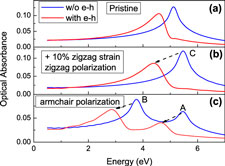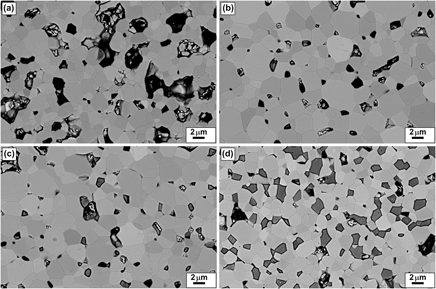Refine search
Actions for selected content:
106102 results in Materials Science
Sintering and Dielectric Properties of SrTiO3-based Ceramics
-
- Journal:
- MRS Online Proceedings Library Archive / Volume 1397 / 2012
- Published online by Cambridge University Press:
- 21 March 2012, mrsf11-1397-p13-42
- Print publication:
- 2012
-
- Article
- Export citation
Investigation of Nanophysical Properties of Aging Polyamide Nanofibrillar Tissue Scaffolds by TEM, SAED, Contact Angle and Raman Spectroscopies
-
- Journal:
- MRS Online Proceedings Library Archive / Volume 1417 / 2012
- Published online by Cambridge University Press:
- 23 April 2012, mrsf11-1417-kk06-31
- Print publication:
- 2012
-
- Article
- Export citation
Simulation of space charge limited organic non volatile memory elements
-
- Journal:
- MRS Online Proceedings Library Archive / Volume 1430 / 2012
- Published online by Cambridge University Press:
- 17 May 2012, mrss12-1430-e03-06
- Print publication:
- 2012
-
- Article
- Export citation
Manufacturable Polymeric Optical Waveguide based Bus Structures for Board Level Optical Interconnects
-
- Journal:
- MRS Online Proceedings Library Archive / Volume 1438 / 2012
- Published online by Cambridge University Press:
- 25 July 2012, mrss12-1438-m01-07
- Print publication:
- 2012
-
- Article
- Export citation
Silver nanodiscs for light scattering in thin epitaxial silicon solar cells: influence of the disc radius
-
- Journal:
- MRS Online Proceedings Library Archive / Volume 1391 / 2012
- Published online by Cambridge University Press:
- 20 March 2012, mrsf11-1391-j07-29
- Print publication:
- 2012
-
- Article
- Export citation
Effect of the Aging Treatment in Micro-Alloyed Steel
-
- Journal:
- MRS Online Proceedings Library Archive / Volume 1481 / 2012
- Published online by Cambridge University Press:
- 20 December 2012, pp. 55-61
- Print publication:
- 2012
-
- Article
- Export citation
MRS enhances commitment to spreading the word about materials
-
- Journal:
- MRS Bulletin / Volume 37 / Issue 1 / January 2012
- Published online by Cambridge University Press:
- 13 January 2012, p. 5
- Print publication:
- January 2012
-
- Article
-
- You have access
- HTML
- Export citation
Anisotropic Cellular Alignment on Nano-Wrinkled Polymeric Surface
-
- Journal:
- MRS Online Proceedings Library Archive / Volume 1415 / 2012
- Published online by Cambridge University Press:
- 12 January 2012, mrsf11-1415-ii09-02
- Print publication:
- 2012
-
- Article
- Export citation
ON ENABLING NANOCRYSTALLINE DIAMOND FOR DEVICE USE: NOVEL ION BEAM METHODOLOGY AND THE REALIZATION OF SHALLOW N-TYPE DIAMOND
-
- Journal:
- MRS Online Proceedings Library Archive / Volume 1478 / 2012
- Published online by Cambridge University Press:
- 21 February 2013, imrc12-1478-s7d-03
- Print publication:
- 2012
-
- Article
- Export citation
Possible self-organized criticality in the Portevin–Le Chatelier effect during decomposition of solid solution alloys
-
- Journal:
- MRS Communications / Volume 2 / Issue 1 / March 2012
- Published online by Cambridge University Press:
- 29 December 2011, pp. 1-4
- Print publication:
- March 2012
-
- Article
- Export citation
Thermal decomposition and fractal properties of sputter-deposited platinum oxide thin films
-
- Journal:
- Journal of Materials Research / Volume 27 / Issue 5 / 14 March 2012
- Published online by Cambridge University Press:
- 20 December 2011, pp. 829-836
- Print publication:
- 14 March 2012
-
- Article
- Export citation
Many-electron effects on optical absorption spectra of strained graphene
-
- Journal:
- Journal of Materials Research / Volume 27 / Issue 2 / 28 January 2012
- Published online by Cambridge University Press:
- 20 December 2011, pp. 403-409
- Print publication:
- 28 January 2012
-
- Article
- Export citation
Synthesis of In2−xGexO3 nanopowders for thermoelectric applications
-
- Journal:
- Journal of Materials Research / Volume 27 / Issue 2 / 28 January 2012
- Published online by Cambridge University Press:
- 20 December 2011, pp. 500-505
- Print publication:
- 28 January 2012
-
- Article
- Export citation
An approach to the three-dimensional simulations of the Bosch process
-
- Journal:
- Journal of Materials Research / Volume 27 / Issue 5 / 14 March 2012
- Published online by Cambridge University Press:
- 20 December 2011, pp. 793-798
- Print publication:
- 14 March 2012
-
- Article
- Export citation
JMR volume 26 issue 24 Cover and Back matter
-
- Journal:
- Journal of Materials Research / Volume 26 / Issue 24 / 28 December 2011
- Published online by Cambridge University Press:
- 19 December 2011, pp. b1-b3
- Print publication:
- 28 December 2011
-
- Article
-
- You have access
- Export citation
JMR volume 26 issue 24 Cover and Front matter
-
- Journal:
- Journal of Materials Research / Volume 26 / Issue 24 / 28 December 2011
- Published online by Cambridge University Press:
- 19 December 2011, pp. f1-f5
- Print publication:
- 28 December 2011
-
- Article
-
- You have access
- Export citation
Band engineering of type-II ZnO/ZnSe heterostructures for solar cell applications
-
- Journal:
- Journal of Materials Research / Volume 27 / Issue 4 / 28 February 2012
- Published online by Cambridge University Press:
- 16 December 2011, pp. 730-733
- Print publication:
- 28 February 2012
-
- Article
- Export citation
Residual stress in as-deposited Al–Cu–Fe–B quasicrystalline thin films
-
- Journal:
- Journal of Materials Research / Volume 27 / Issue 5 / 14 March 2012
- Published online by Cambridge University Press:
- 16 December 2011, pp. 837-844
- Print publication:
- 14 March 2012
-
- Article
- Export citation
Finite element analysis of nanowire indentation on a flat substrate
-
- Journal:
- Journal of Materials Research / Volume 27 / Issue 3 / 14 February 2012
- Published online by Cambridge University Press:
- 16 December 2011, pp. 586-591
- Print publication:
- 14 February 2012
-
- Article
- Export citation
Fe64B22.8Nd6.6Y3.9Nb2.7 bulk nanocomposite magnets with improved size and magnetic properties
-
- Journal:
- Journal of Materials Research / Volume 27 / Issue 4 / 28 February 2012
- Published online by Cambridge University Press:
- 16 December 2011, pp. 725-729
- Print publication:
- 28 February 2012
-
- Article
- Export citation







 .
.

